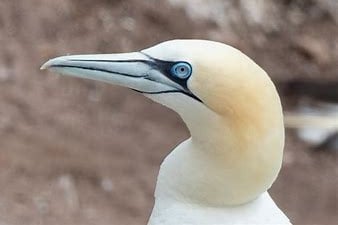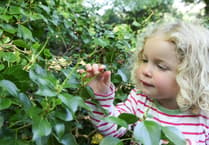We are incredibly lucky on the Isle of Man to have so many wonderful beaches to enjoy, especially at this time of year when dogs and their owners can exercise on them without any seasonal restrictions.
This is also a time of year when our beaches are home to many visiting shore and sea birds - geese, ducks, gulls and species that many people may struggle to identify such as dunlins, turnstones and ringed plovers.
Our beaches provide a place for them to feed at low tide, roost at high tide, and bathe and drink where streams enter the sea.
Many birds will have travelled hundreds of miles to enjoy our warmer, richer waters in winter, with sandy and muddy beaches providing a wealth of food.
Most dog owners would not intentionally harm wild birds, but our winter visitors are being adversely affected by unintentional disturbance from dogs.
The presence of dogs on a beach (on or off lead) causes an instinctive reaction to fly in many birds, especially those that experience predation from Arctic foxes for half of the year.
This repeated disturbance is harmful because it causes birds to use more energy (and essential calories) moving from place to place, and it also reduces their feeding time.
This in turn leads to poor body condition which affects their survival on their long spring migration journeys, and ultimately it compromises their breeding success. This is why many populations of wildfowl and shore birds are falling.
Please try not to take your dog onto an area of beach where there are birds on, or by, the water.
At high tide avoid upper beaches where ground-nesting birds roost (birds such as the curlew and the oyster catcher), and at lower tides avoid crossing the beach where birds are feeding.
Hotspots of particular concern, where our winter migrants are seen most often, include the point of Ayre and beaches in the far north, either end of Castletown beach, Derbyhaven beach, the beach at the bottom of Fisher’s Hill, and Gansey beach.
Being vigilant around seabirds is even more necessary at the moment because the current strain of Highly Pathogenic Avian Influenza (HPAI H5N1) has had a significant impact on seabird populations since it first appeared in the UK in 2021 – in fact, the worst mortality rate ever recorded. Millions of birds have died, and because many species don’t reach breeding age until they are about five years old, and they have small numbers of offspring, their populations will take a long time to recover (and some may never return to pre-epidemic numbers).
And when you consider that many seabird species were already in decline before H5N1 turned up, due to unsustainable fishing practices, warmer seas, offshore windfarms and predatory mammal species (from long tails to hedgehogs), the need to do everything we can to help them becomes even more apparent.
There is some good news, though: towards the end of last year scientists (the FluMap consortium) confirmed that some wild birds had developed immunity to the H5N1 virus.
They took blood samples from northern gannets and shags in Scotland and found that up to 50 per cent had antibodies. The sample size was relatively small, because catching wild birds and taking blood samples humanely is extremely challenging, and this is partly why it hasn’t been done before. But the findings are supported by observations from ornithologists that some birds appear to have acquired immunity - notably gannets, whose typically blue irises turned black after surviving infection.




